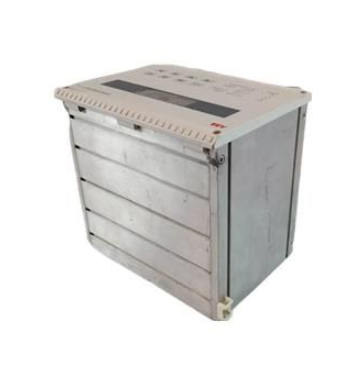The main hazard of collapse
Collapse is one of the main disasters in China's geological disasters. These disasters have brought serious harm to our people's life and property and national economic construction, and greatly affected the development of social economy. A total of 28,962 collapse disasters occurred from 2006 to 2008. In 2008, together with landslides and mudslides, a total of 1,598 casualties were caused, including 656 deaths and 101 missing, with a direct economic loss of 3.27 billion yuan. Its harm is mainly manifested in the following aspects:
(1) Harm to the town
A town is the political, economic and cultural center of a region, with relatively concentrated population and wealth, dense construction and developed industry and commerce. Therefore, once a town is collapsed, it will not only cause huge casualties and direct economic losses, but also bring bad social impact to the region. Some large-scale collapse bodies can even destroy towns, for example, in Dongxiang Autonomous County, Gansu Province, Saller Mountain (2283m above sea level), on March 7, 1983, the mountain suddenly collapsed, the earth and rock rolled, the southern platform of Saller Mountain houses, trees, roads were thrown into the valley 1km away. The soil layer buried 60m deep was turned over, and about 6×107m3 of earth and rock fell. The collapse deposit covers an area of 3km2 and forms a fan mound of 60m high and 1600m long under it. The collapse destroyed 3,000 acres of paddy fields and two reservoirs and killed 277 people.
For another example, at 3:40 on December 3, 2004, a dangerous rock mass collapsed on the back hill of Yanjiaozhai Village, Zuojiaying Town, Nayong County, Guizhou Province. The collapse body impacted the slope below the mountain and some households of Yanjiaozhai (Group), forming a large geological disaster. According to statistics, a total of 19 villagers were affected, 12 houses were destroyed, 39 people were killed, 5 people were missing, and 13 people were injured.

(2) Harm to mines
Due to the characteristics of sudden and hidden, the collapse disaster is very harmful to the mine, which may destroy the factory building, mine facilities and other ground buildings, and cause casualties. Almost all mines in our country are threatened by disasters such as collapse, landslide and debris flow to varying degrees. To some extent, these mountain geological disasters have become "public hazards" that affect mine construction and mineral exploitation, especially for open-pit mines. For example, Yanchihe phosphate mine in Yuan 'an County, Hubei Province was built in 1969, with an annual production capacity of 80,000 tons. Several years after mining, the mining area has been mined out in a large area, and the surface has appeared uneven settlement deformation. In addition, the terrain is steep and the gullies are narrow, the collapse body is located in the prominent mountain mouth, and the tectonic cracks in the rock mass are developed. On June 3, 1980, it produced a massive rock collapse that plunged the mountain from 700m into a valley 500m above sea level. The covering area of rockfall deposits is 560m long from north to south, 400m wide from east to west and 30m thick. The rockfall deposit body is nearly 1×106m3, of which the largest rock block has more than 270 tons. In an instant, the phosphate mine's five-story building was buried and toppled, killing 307 people. At the same time, the rock fall blocked the channel and built a dam 38m high on the Yanchi River, forming a collapsed lake.
(3) Harm to water conservancy and hydropower facilities
The damage of collapse disaster to water conservancy and hydropower projects is mainly manifested in the destruction of DAMS and hydropower stations, the destruction of canals, pipelines, silting reservoirs and so on. The collapse disaster not only aggravates the siltation of the reservoir, reduces the comprehensive benefit of the reservoir, shortens the life of the reservoir, but also may destroy the power station, and even threaten the safety of the dam and its downstream, which often makes the water conservancy and hydropower projects can not operate normally, and the economic losses are huge.
(4) Harm to main traffic lines
The damage of the collapse disaster to the main traffic lines is mainly reflected in the railway traffic, highway traffic and river navigation. From the existing data analysis, the collapse disaster occurs frequently on the traffic trunk line, and the harm is great. At about 8:40 am on November 20, 2007, a large rock collapse accident occurred at the mouth of the Gaoyangzhai tunnel in the Badong section of Hubei Yiwan Railway. About 3000m3 of rocks and other collapsed objects fell from the height instantly, resulting in a long-distance bus being buried, and more than 30 people on board were not survived. Right below the tunnel entrance, the 318 National Highway in Badong County, Hubei Province, Yesanguan section of highway traffic is interrupted
- EMERSON
- Honeywell
- CTI
- Rolls-Royce
- General Electric
- Woodward
- Yaskawa
- xYCOM
- Motorola
- Siemens
- Rockwell
- ABB
- B&R
- HIMA
- Construction site
- electricity
- Automobile market
- PLC
- DCS
- Motor drivers
- VSD
- Implications
- cement
- CO2
- CEM
- methane
- Artificial intelligence
- Titanic
- Solar energy
- Hydrogen fuel cell
- Hydrogen and fuel cells
- Hydrogen and oxygen fuel cells
- tyre
- Chemical fiber
- dynamo
- corpuscle
- Pulp and paper
- printing
- fossil
- FANUC
- Food and beverage
- Life science
- Sewage treatment
- Personal care
- electricity
- boats
- infrastructure
- Automobile industry
- metallurgy
- Nuclear power generation
- Geothermal power generation
- Water and wastewater
- Infrastructure construction
- Mine hazard
- steel
- papermaking
- Natural gas industry
- Infrastructure construction
- Power and energy
- Rubber and plastic
- Renewable energy
- pharmacy
- mining
- Plastic industry
- Schneider
- Kongsberg
- NI
- Wind energy
- International petroleum
- International new energy network
- gas
- WATLOW
- ProSoft
- SEW
- wind
- ADVANCED
- Reliance
- YOKOGAWA
- TRICONEX
- FOXBORO
- METSO
- MAN
- Advantest
- ADVANCED
- ALSTOM
- Control Wave
- AB
- AMAT
- STUDER
- KONGSBERG
- MOTOROLA
- DANAHER MOTION
- Bently
- Galil
- EATON
- MOLEX
- Triconex
- DEIF
- B&W
- ZYGO
- Aerotech
- DANFOSS
- KOLLMORGEN
- Beijer
- Endress+Hauser
- MOOG
- KB
- Moxa
- Rexroth


Email:wang@kongjiangauto.com


























































































































